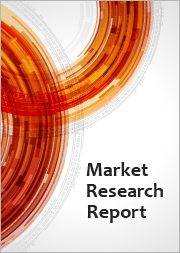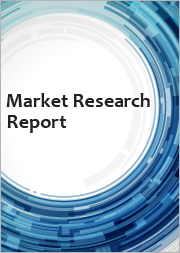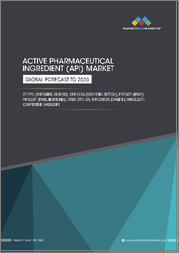
|
시장보고서
상품코드
1785148
세계의 면역억제제 원료의약품 시장 - 산업 규모, 점유율, 동향, 기회, 예측 : 방법별, 용도별, 유형별, 제품별, 원료의약품별, 최종 사용자별, 지역별, 경쟁별(2020-2030년)Immunosuppressants API Market - Global Industry Size, Share, Trends, Opportunity, and Forecast, Segmented By Method, By Application, By Type, By Product, By APIs, By End User, By Region and Competition, 2020-2030F |
||||||
세계의 면역억제제 원료의약품 시장 규모는 2024년에 27억 8,000만 달러가 되었고, 2030년까지의 예측기간의 CAGR은 8.25%를 나타내 눈부신 성장이 예상되고 있습니다.
세계의 면역억제제 원료의약품 시장은 면역억제제의 제조에 사용되는 주요 성분의 세계의 생산, 유통, 판매를 망라하고 있습니다. 이러한 약물은 신체의 면역 반응을 감소 또는 억제하는데 중요한 역할을 하며, 장기 이식의 거부 반응의 예방 및 자가면역 질환의 관리에 중요한 역할을 합니다. 이 광대한 시장에서는 수많은 제약 회사, 공급업체 및 유통업체가 협력하여 이러한 필수 의약품 성분의 생산과 원활한 공급망을 확보하고 있습니다. 연구개발의 지속적인 발전은 면역억제제의 효능과 안전성 프로파일의 지속적인 개선에 기여하고 있습니다. 이러한 지속적인 발전은 이식 수술과 자가면역 질환의 세계 유행으로 인한 수요 증가에 대응하기 위해 필수적입니다.
| 시장 개요 | |
|---|---|
| 예측 기간 | 2026-2030년 |
| 시장 규모 : 2024년 | 27억 8,000만 달러 |
| 시장 규모 : 2030년 | 44억 4,000만 달러 |
| CAGR : 2025-2030년 | 8.25% |
| 급성장 부문 | 자가면역질환 |
| 최대 시장 | 북미 |
예를 들어, 2023년 5월, 밀리포어 시그마는 고활성 의약품 성분(HPAPI)의 생산 능력을 두 배로 늘리기 위한 미국 시설의 6,900만 달러 확장을 발표했습니다. 이 확장 시설은 항체 약물 복합체(ADC)의 개발과 상업 생산을 지원하고, 표적 암 치료에 있어서의 회사의 능력을 강화하고, 성장하는 특수 의약품 제조 시장에서의 회사의 지위를 강화합니다. 세계의 면역억제제 원료의약품 시장 특징은 그 세계적인 확산이며, 다양한 이해관계자가 협력하여 환자의 진화하는 헬스케어 요구에 대응하고 있습니다. 혁신적인 제형부터 최적화된 제조 공정에 이르기까지, 업계는 최첨단 솔루션을 의료 전문가와 환자에게 제공하기 위해 노력하고 있습니다. 면역계 제어에 대한 이해가 깊어지고 기술이 계속 진화하고 있는 가운데, 이 시장은 더욱 성장과 혁신의 가능성을 크게 담고 있습니다.
주요 시장 성장 촉진요인
자가면역 질환의 유병률 상승
주요 시장 과제
API와 관련된 높은 비용
주요 시장 동향
헬스케어 인프라 확대
목차
제1장 개요
제2장 조사 방법
제3장 주요 요약
제4장 고객의 목소리
제5장 세계의 면역억제제 원료의약품 시장 전망
- 시장 규모와 예측
- 금액별
- 시장 점유율·예측
- 방법별(합성화학, 펩티드화학, 발효, 크로마토그래피 정제)
- 용도별(자가면역질환, 장기이식)
- 유형별(코르티코스테로이드, 야누스키나제 억제제, 칼시뉴린 억제제, mTOR 억제제, 기타)
- 제품별(정제, 캡슐, 액제, 주사제)
- 원약별(타크로리무스, 시롤리무스, 에베로리무스, 마이코페놀레이트모페틸, 마이코페놀레이트나트륨)
- 최종 사용자별(생명공학 및 바이오제약 기업, CMO, CRO, CDMO, 기타)
- 지역별
- 기업별(2024년)
- 시장 맵
제6장 북미의 면역억제제 원료의약품 시장 전망
- 시장 규모와 예측
- 시장 점유율·예측
- 북미 : 국가별 분석
- 미국
- 캐나다
- 멕시코
제7장 유럽의 면역억제제 원료의약품 시장 전망
- 시장 규모와 예측
- 시장 점유율·예측
- 유럽 : 국가별 분석
- 독일
- 영국
- 이탈리아
- 프랑스
- 스페인
제8장 아시아태평양의 면역억제제 원료의약품 시장 전망
- 시장 규모와 예측
- 시장 점유율·예측
- 아시아태평양 : 국가별 분석
- 중국
- 인도
- 일본
- 한국
- 호주
제9장 남미의 면역억제제 원료의약품 시장 전망
- 시장 규모와 예측
- 시장 점유율·예측
- 남미 : 국가별 분석
- 브라질
- 아르헨티나
- 콜롬비아
제10장 중동 및 아프리카의 면역억제제 원료의약품 시장 전망
- 시장 규모와 예측
- 시장 점유율·예측
- 중동 및 아프리카 : 국가별 분석
- 남아프리카
- 사우디아라비아
- 아랍에미리트(UAE)
제11장 시장 역학
- 성장 촉진요인
- 과제
제12장 시장 동향과 발전
- 합병과 인수
- 제품 출시
- 최근 동향
제13장 Porter's Five Forces 분석
- 업계 내 경쟁
- 신규 진입의 가능성
- 공급자의 힘
- 고객의 힘
- 대체품의 위협
제14장 경쟁 구도
- Biocon Ltd.
- NATCO Pharma Limited
- Triveni Interchem Private Limited
- Concord Biotech Ltd.
- RPG Life Sciences Limited
- Jiangsu Jiuyang Bio-Pharmaceutical Co. Ltd.
- Chunghwa Chemical Synthesis & Biotech Co. Ltd.
- AbbVie Inc.
- Pfizer Inc.
- Zhejiang Hisun Pharmaceutical Co. Ltd.
제15장 전략적 제안
제16장 기업 소개와 면책사항
KTH 25.08.12Global Immunosuppressants API Market was valued at USD 2.78 Billion in 2024 and is anticipated to project impressive growth in the forecast period with a CAGR of 8.25% through 2030F. The Global Immunosuppressants API (Active Pharmaceutical Ingredient) Market encompasses the worldwide production, distribution, and sales of key components used in the manufacturing of immunosuppressive drugs. These drugs play a vital role in reducing or inhibiting the body's immune response, serving as a crucial intervention in preventing organ transplant rejection and managing autoimmune diseases. In this expansive market, numerous pharmaceutical companies, suppliers, and distributors collaborate to ensure the production and seamless supply chain of these essential medicinal ingredients. The continuous advancements in research and development efforts contribute to the relentless pursuit of improving the efficacy and safety profiles of immunosuppressants. This ongoing progress is vital in meeting the increasing demand driven by the growing prevalence of transplant procedures and autoimmune conditions worldwide.
| Market Overview | |
|---|---|
| Forecast Period | 2026-2030 |
| Market Size 2024 | USD 2.78 Billion |
| Market Size 2030 | USD 4.44 Billion |
| CAGR 2025-2030 | 8.25% |
| Fastest Growing Segment | Autoimmune Disease |
| Largest Market | North America |
For instance, in May 2023, Millipore Sigma announced a USD 69 million expansion of its U.S. facility, aiming to double its manufacturing capacity for highly potent active pharmaceutical ingredients (HPAPIs). The expanded facility will support the development and commercial production of antibody drug conjugates (ADCs), enhancing the company's capabilities in targeted cancer therapies and reinforcing its position in the growing market for specialized pharmaceutical manufacturing. The Global Immunosuppressants API Market is characterized by its global scope, with diverse stakeholders working together to address the evolving healthcare needs of patients. From innovative drug formulations to optimized manufacturing processes, the industry strives to deliver cutting-edge solutions to healthcare professionals and patients alike. As the understanding of immune system regulation deepens and technology continues to evolve, this market holds immense potential for further growth and innovation.
Key Market Drivers
Rising Prevalence of Autoimmune Diseases
The rising prevalence of autoimmune diseases represents a significant healthcare challenge worldwide. Autoimmune disorders, such as rheumatoid arthritis, lupus, and multiple sclerosis, occur when the immune system mistakenly attacks healthy cells and tissues. As these conditions become more prevalent, there is a growing need for effective treatments, and this has led to an increase in the demand for immunosuppressants API (Active Pharmaceutical Ingredients). For instance, according to the Alzheimer's Association, over 6 million people in the U.S. were affected by Alzheimer's disease in 2023, making it the sixth leading cause of death, primarily impacting those aged 65 and older. This number is projected to reach 12.7 million by 2050, significantly increasing the demand for drugs and microbial APIs related to Alzheimer's and similar neurodegenerative conditions, driving growth in pharmaceutical development and manufacturing. Healthcare awareness and diagnostics improve, more individuals are being correctly diagnosed with autoimmune diseases, leading to an increased demand for treatment options. Secondly, as life expectancy increases, the aging population is more susceptible to autoimmune conditions, further fueling the need for immunosuppressant medications. Thirdly, ongoing research and development efforts are leading to the discovery of newer and more targeted immunosuppressant drugs, which, in turn, are stimulating market growth.
The rising prevalence of autoimmune diseases is expected to drive significant growth in the immunosuppressants API market. This growth is not only beneficial for pharmaceutical companies but also for the countless individuals suffering from autoimmune disorders, as it promises better access to innovative and effective treatments that can help them manage their conditions and lead healthier lives.
Key Market Challenges
High Costs Associated With API
The high costs associated with Active Pharmaceutical Ingredients (APIs) in the immunosuppressants market pose a significant challenge to the growth of this sector. The complex and labor-intensive processes involved in manufacturing immunosuppressant APIs, along with the stringent quality control requirements and regulatory compliance, contribute to the elevated costs of production. The research and development phase for immunosuppressant drugs demands substantial investments in terms of time and resources. Identifying and synthesizing effective compounds, conducting preclinical and clinical trials, and meeting regulatory requirements can lead to substantial expenses. These costs are often passed on to consumers and healthcare systems, which can result in limited access to these vital medications, especially in lower-income regions.
The manufacturing of immunosuppressant apis requires specialized facilities, equipment, and highly skilled personnel to ensure product consistency and quality. Maintaining these facilities and adhering to Good Manufacturing Practices (GMP) standards further escalates production costs. These expenditures, again, contribute to the high price tags of immunosuppressant drugs, making them less affordable for many patients.
The ongoing research to develop more targeted and efficient immunosuppressants often involves the exploration of cutting-edge technologies and innovative drug delivery systems. While these advancements can lead to improved therapeutic outcomes, they can also add to the overall cost burden of drug production.
The high costs associated with immunosuppressant apis have the potential to impede their growth and accessibility. Efforts to mitigate these challenges, such as increasing efficiency in manufacturing processes and promoting competition in the pharmaceutical industry, are essential to ensure that individuals who require immunosuppressant therapies can access them without financial hardship, ultimately improving the overall healthcare landscape.
Key Market Trends
Expansion Of Healthcare Infrastructure
The expansion of healthcare infrastructure is expected to play a pivotal role in driving the growth of the Immunosuppressants API (Active Pharmaceutical Ingredients) market in the future. A robust healthcare infrastructure is essential for efficiently diagnosing, treating, and managing various medical conditions, including autoimmune diseases and organ transplantations, where immunosuppressant drugs are instrumental. An expanded healthcare infrastructure means increased access to medical facilities and specialized clinics. This facilitates earlier diagnosis and treatment of autoimmune diseases, leading to a larger patient pool requiring immunosuppressant therapies. The establishment of well-equipped transplant centers and surgical facilities in various regions enhances the capacity to perform organ transplantations, leading to higher demand for immunosuppressant medications in both developed and developing countries.
The availability of state-of-the-art healthcare facilities supports the adoption of cutting-edge technologies and treatments. This includes advanced diagnostic tools, precision medicine approaches, and innovative immunosuppressant therapies that offer better patient outcomes and fewer side effects. As the healthcare infrastructure continues to grow, it encourages research and development efforts aimed at improving immunosuppressant drugs, further boosting market growth. A robust healthcare system often involves better health insurance coverage and government support for patient care. This can alleviate the financial burden on individuals requiring long-term immunosuppressant treatments, making these medications more accessible and affordable. Government policies that prioritize the expansion of healthcare infrastructure can facilitate increased investment in pharmaceutical research and production, driving innovation and competition in the immunosuppressants API market.
Key Market Players
- Biocon Ltd.
- NATCO Pharma Limited
- Triveni Interchem Private Limited
- Concord Biotech Ltd.
- RPG Life Sciences Limited
- Jiangsu Jiuyang Bio-Pharmaceutical Co. Ltd.
- Chunghwa Chemical Synthesis & Biotech Co. Ltd.
- AbbVie Inc.
- Pfizer Inc.
- Zhejiang Hisun Pharmaceutical Co. Ltd.
Report Scope:
In this report, the Global Immunosuppressants API Market has been segmented into the following categories, in addition to the industry trends which have also been detailed below:
Immunosuppressants API Market, By Method:
- Synthetic Chemistry
- Peptide chemistry
- Fermentation
- Chromatographic purification
Immunosuppressants API Market, By Application:
- Autoimmune Disease
- Organ Transplant
Immunosuppressants API Market, By Type:
- Corticosteroids
- Janus Kinase Inhibitor
- Calcineurin Inhibitors
- mTOR Inhibitor
- Others
Immunosuppressants API Market, By Product:
- Tablets
- Capsules
- Liquids
- Injections
Immunosuppressants API Market, By APIs:
- Tacrolimus
- Sirolimus
- Everolimus
- Mycophenolate Mofetil
- Mycophenolate Sodium
Immunosuppressants API Market, By End User:
- Biotechnology & Biopharmaceutical Companies
- CMOs
- CROs
- CDMOs
- Others
Immunosuppressants API Market, By Region:
- North America
- United States
- Canada
- Mexico
- Europe
- France
- United Kingdom
- Italy
- Germany
- Spain
- Asia-Pacific
- China
- India
- Japan
- Australia
- South Korea
- South America
- Brazil
- Argentina
- Colombia
- Middle East & Africa
- South Africa
- Saudi Arabia
- UAE
Competitive Landscape
Company Profiles: Detailed analysis of the major companies present in the Global Immunosuppressants API Market.
Available Customizations:
Global Immunosuppressants API market report with the given market data, TechSci Research offers customizations according to a company's specific needs. The following customization options are available for the report:
Company Information
- Detailed analysis and profiling of additional market players (up to five).
Table of Contents
1. Product Overview
- 1.1. Market Definition
- 1.2. Scope of the Market
- 1.2.1. Markets Covered
- 1.2.2. Years Considered for Study
- 1.2.3. Key Market Segmentations
2. Research Methodology
- 2.1. Objective of the Study
- 2.2. Baseline Methodology
- 2.3. Key Industry Partners
- 2.4. Major Association and Secondary Sources
- 2.5. Forecasting Methodology
- 2.6. Data Triangulation & Validations
- 2.7. Assumptions and Limitations
3. Executive Summary
- 3.1. Overview of the Market
- 3.2. Overview of Key Market Segmentations
- 3.3. Overview of Key Market Players
- 3.4. Overview of Key Regions/Countries
- 3.5. Overview of Market Drivers, Challenges, Trends
4. Voice of Customer
5. Global Immunosuppressants API Market Outlook
- 5.1. Market Size & Forecast
- 5.1.1. By Value
- 5.2. Market Share & Forecast
- 5.2.1. By Method (Synthetic Chemistry, Peptide chemistry, Fermentation, Chromatographic purification)
- 5.2.2. By Application (Autoimmune Disease, Organ Transplant)
- 5.2.3. By Type (Corticosteroids, Janus Kinase Inhibitor, Calcineurin Inhibitors, mTOR Inhibitor, Others)
- 5.2.4. By Product (Tablets, Capsules, Liquids, Injections)
- 5.2.5. By APIs (Tacrolimus, Sirolimus, Everolimus, Mycophenolate Mofetil, Mycophenolate Sodium)
- 5.2.6. By End User (Biotechnology & Biopharmaceutical Companies, CMOs, CROs, CDMOs, Others)
- 5.2.7. By Region
- 5.2.8. By Company (2024)
- 5.3. Market Map
6. North America Immunosuppressants API Market Outlook
- 6.1. Market Size & Forecast
- 6.1.1. By Value
- 6.2. Market Share & Forecast
- 6.2.1. By Method
- 6.2.2. By Application
- 6.2.3. By Type
- 6.2.4. By Product
- 6.2.5. By APIs
- 6.2.6. By End User
- 6.2.7. By Country
- 6.3. North America: Country Analysis
- 6.3.1. United States Immunosuppressants API Market Outlook
- 6.3.1.1. Market Size & Forecast
- 6.3.1.1.1. By Value
- 6.3.1.2. Market Share & Forecast
- 6.3.1.2.1. By Method
- 6.3.1.2.2. By Application
- 6.3.1.2.3. By Type
- 6.3.1.2.4. By Product
- 6.3.1.2.5. By APIs
- 6.3.1.2.6. By End User
- 6.3.1.1. Market Size & Forecast
- 6.3.2. Canada Immunosuppressants API Market Outlook
- 6.3.2.1. Market Size & Forecast
- 6.3.2.1.1. By Value
- 6.3.2.2. Market Share & Forecast
- 6.3.2.2.1. By Method
- 6.3.2.2.2. By Application
- 6.3.2.2.3. By Type
- 6.3.2.2.4. By Product
- 6.3.2.2.5. By APIs
- 6.3.2.2.6. By End User
- 6.3.2.1. Market Size & Forecast
- 6.3.3. Mexico Immunosuppressants API Market Outlook
- 6.3.3.1. Market Size & Forecast
- 6.3.3.1.1. By Value
- 6.3.3.2. Market Share & Forecast
- 6.3.3.2.1. By Method
- 6.3.3.2.2. By Application
- 6.3.3.2.3. By Type
- 6.3.3.2.4. By Product
- 6.3.3.2.5. By APIs
- 6.3.3.2.6. By End User
- 6.3.3.1. Market Size & Forecast
- 6.3.1. United States Immunosuppressants API Market Outlook
7. Europe Immunosuppressants API Market Outlook
- 7.1. Market Size & Forecast
- 7.1.1. By Value
- 7.2. Market Share & Forecast
- 7.2.1. By Method
- 7.2.2. By Application
- 7.2.3. By Type
- 7.2.4. By Product
- 7.2.5. By APIs
- 7.2.6. By End User
- 7.2.7. By Country
- 7.3. Europe: Country Analysis
- 7.3.1. Germany Immunosuppressants API Market Outlook
- 7.3.1.1. Market Size & Forecast
- 7.3.1.1.1. By Value
- 7.3.1.2. Market Share & Forecast
- 7.3.1.2.1. By Method
- 7.3.1.2.2. By Application
- 7.3.1.2.3. By Type
- 7.3.1.2.4. By Product
- 7.3.1.2.5. By APIs
- 7.3.1.2.6. By End User
- 7.3.1.1. Market Size & Forecast
- 7.3.2. United Kingdom Immunosuppressants API Market Outlook
- 7.3.2.1. Market Size & Forecast
- 7.3.2.1.1. By Value
- 7.3.2.2. Market Share & Forecast
- 7.3.2.2.1. By Method
- 7.3.2.2.2. By Application
- 7.3.2.2.3. By Type
- 7.3.2.2.4. By Product
- 7.3.2.2.5. By APIs
- 7.3.2.2.6. By End User
- 7.3.2.1. Market Size & Forecast
- 7.3.3. Italy Immunosuppressants API Market Outlook
- 7.3.3.1. Market Size & Forecast
- 7.3.3.1.1. By Value
- 7.3.3.2. Market Share & Forecast
- 7.3.3.2.1. By Method
- 7.3.3.2.2. By Application
- 7.3.3.2.3. By Type
- 7.3.3.2.4. By Product
- 7.3.3.2.5. By APIs
- 7.3.3.2.6. By End User
- 7.3.3.1. Market Size & Forecast
- 7.3.4. France Immunosuppressants API Market Outlook
- 7.3.4.1. Market Size & Forecast
- 7.3.4.1.1. By Value
- 7.3.4.2. Market Share & Forecast
- 7.3.4.2.1. By Method
- 7.3.4.2.2. By Application
- 7.3.4.2.3. By Type
- 7.3.4.2.4. By Product
- 7.3.4.2.5. By APIs
- 7.3.4.2.6. By End User
- 7.3.4.1. Market Size & Forecast
- 7.3.5. Spain Immunosuppressants API Market Outlook
- 7.3.5.1. Market Size & Forecast
- 7.3.5.1.1. By Value
- 7.3.5.2. Market Share & Forecast
- 7.3.5.2.1. By Method
- 7.3.5.2.2. By Application
- 7.3.5.2.3. By Type
- 7.3.5.2.4. By Product
- 7.3.5.2.5. By APIs
- 7.3.5.2.6. By End User
- 7.3.5.1. Market Size & Forecast
- 7.3.1. Germany Immunosuppressants API Market Outlook
8. Asia-Pacific Immunosuppressants API Market Outlook
- 8.1. Market Size & Forecast
- 8.1.1. By Value
- 8.2. Market Share & Forecast
- 8.2.1. By Method
- 8.2.2. By Application
- 8.2.3. By Type
- 8.2.4. By Product
- 8.2.5. By APIs
- 8.2.6. By End User
- 8.2.7. By Country
- 8.3. Asia-Pacific: Country Analysis
- 8.3.1. China Immunosuppressants API Market Outlook
- 8.3.1.1. Market Size & Forecast
- 8.3.1.1.1. By Value
- 8.3.1.2. Market Share & Forecast
- 8.3.1.2.1. By Method
- 8.3.1.2.2. By Application
- 8.3.1.2.3. By Type
- 8.3.1.2.4. By Product
- 8.3.1.2.5. By APIs
- 8.3.1.2.6. By End User
- 8.3.1.1. Market Size & Forecast
- 8.3.2. India Immunosuppressants API Market Outlook
- 8.3.2.1. Market Size & Forecast
- 8.3.2.1.1. By Value
- 8.3.2.2. Market Share & Forecast
- 8.3.2.2.1. By Method
- 8.3.2.2.2. By Application
- 8.3.2.2.3. By Type
- 8.3.2.2.4. By Product
- 8.3.2.2.5. By APIs
- 8.3.2.2.6. By End User
- 8.3.2.1. Market Size & Forecast
- 8.3.3. Japan Immunosuppressants API Market Outlook
- 8.3.3.1. Market Size & Forecast
- 8.3.3.1.1. By Value
- 8.3.3.2. Market Share & Forecast
- 8.3.3.2.1. By Method
- 8.3.3.2.2. By Application
- 8.3.3.2.3. By Type
- 8.3.3.2.4. By Product
- 8.3.3.2.5. By APIs
- 8.3.3.2.6. By End User
- 8.3.3.1. Market Size & Forecast
- 8.3.4. South Korea Immunosuppressants API Market Outlook
- 8.3.4.1. Market Size & Forecast
- 8.3.4.1.1. By Value
- 8.3.4.2. Market Share & Forecast
- 8.3.4.2.1. By Method
- 8.3.4.2.2. By Application
- 8.3.4.2.3. By Type
- 8.3.4.2.4. By Product
- 8.3.4.2.5. By APIs
- 8.3.4.2.6. By End User
- 8.3.4.1. Market Size & Forecast
- 8.3.5. Australia Immunosuppressants API Market Outlook
- 8.3.5.1. Market Size & Forecast
- 8.3.5.1.1. By Value
- 8.3.5.2. Market Share & Forecast
- 8.3.5.2.1. By Method
- 8.3.5.2.2. By Application
- 8.3.5.2.3. By Type
- 8.3.5.2.4. By Product
- 8.3.5.2.5. By APIs
- 8.3.5.2.6. By End User
- 8.3.5.1. Market Size & Forecast
- 8.3.1. China Immunosuppressants API Market Outlook
9. South America Immunosuppressants API Market Outlook
- 9.1. Market Size & Forecast
- 9.1.1. By Value
- 9.2. Market Share & Forecast
- 9.2.1. By Method
- 9.2.2. By Application
- 9.2.3. By Type
- 9.2.4. By Product
- 9.2.5. By APIs
- 9.2.6. By End User
- 9.2.7. By Country
- 9.3. South America: Country Analysis
- 9.3.1. Brazil Immunosuppressants API Market Outlook
- 9.3.1.1. Market Size & Forecast
- 9.3.1.1.1. By Value
- 9.3.1.2. Market Share & Forecast
- 9.3.1.2.1. By Method
- 9.3.1.2.2. By Application
- 9.3.1.2.3. By Type
- 9.3.1.2.4. By Product
- 9.3.1.2.5. By APIs
- 9.3.1.2.6. By End User
- 9.3.1.1. Market Size & Forecast
- 9.3.2. Argentina Immunosuppressants API Market Outlook
- 9.3.2.1. Market Size & Forecast
- 9.3.2.1.1. By Value
- 9.3.2.2. Market Share & Forecast
- 9.3.2.2.1. By Method
- 9.3.2.2.2. By Application
- 9.3.2.2.3. By Type
- 9.3.2.2.4. By Product
- 9.3.2.2.5. By APIs
- 9.3.2.2.6. By End User
- 9.3.2.1. Market Size & Forecast
- 9.3.3. Colombia Immunosuppressants API Market Outlook
- 9.3.3.1. Market Size & Forecast
- 9.3.3.1.1. By Value
- 9.3.3.2. Market Share & Forecast
- 9.3.3.2.1. By Method
- 9.3.3.2.2. By Application
- 9.3.3.2.3. By Type
- 9.3.3.2.4. By Product
- 9.3.3.2.5. By APIs
- 9.3.3.2.6. By End User
- 9.3.3.1. Market Size & Forecast
- 9.3.1. Brazil Immunosuppressants API Market Outlook
10. Middle East and Africa Immunosuppressants API Market Outlook
- 10.1. Market Size & Forecast
- 10.1.1. By Value
- 10.2. Market Share & Forecast
- 10.2.1. By Method
- 10.2.2. By Application
- 10.2.3. By Type
- 10.2.4. By Product
- 10.2.5. By APIs
- 10.2.6. By End User
- 10.2.7. By Country
- 10.3. MEA: Country Analysis
- 10.3.1. South Africa Immunosuppressants API Market Outlook
- 10.3.1.1. Market Size & Forecast
- 10.3.1.1.1. By Value
- 10.3.1.2. Market Share & Forecast
- 10.3.1.2.1. By Method
- 10.3.1.2.2. By Application
- 10.3.1.2.3. By Type
- 10.3.1.2.4. By Product
- 10.3.1.2.5. By APIs
- 10.3.1.2.6. By End User
- 10.3.1.1. Market Size & Forecast
- 10.3.2. Saudi Arabia Immunosuppressants API Market Outlook
- 10.3.2.1. Market Size & Forecast
- 10.3.2.1.1. By Value
- 10.3.2.2. Market Share & Forecast
- 10.3.2.2.1. By Method
- 10.3.2.2.2. By Application
- 10.3.2.2.3. By Type
- 10.3.2.2.4. By Product
- 10.3.2.2.5. By APIs
- 10.3.2.2.6. By End User
- 10.3.2.1. Market Size & Forecast
- 10.3.3. UAE Immunosuppressants API Market Outlook
- 10.3.3.1. Market Size & Forecast
- 10.3.3.1.1. By Value
- 10.3.3.2. Market Share & Forecast
- 10.3.3.2.1. By Method
- 10.3.3.2.2. By Application
- 10.3.3.2.3. By Type
- 10.3.3.2.4. By Product
- 10.3.3.2.5. By APIs
- 10.3.3.2.6. By End User
- 10.3.3.1. Market Size & Forecast
- 10.3.1. South Africa Immunosuppressants API Market Outlook
11. Market Dynamics
- 11.1. Drivers
- 11.2. Challenges
12. Market Trends & Developments
- 12.1. Merger & Acquisition (If Any)
- 12.2. Product Launches (If Any)
- 12.3. Recent Developments
13. Porter's Five Forces Analysis
- 13.1. Competition in the Industry
- 13.2. Potential of New Entrants
- 13.3. Power of Suppliers
- 13.4. Power of Customers
- 13.5. Threat of Substitute Products
14. Competitive Landscape
- 14.1. Biocon Ltd.
- 14.1.1. Business Overview
- 14.1.2. Company Snapshot
- 14.1.3. Products & Services
- 14.1.4. Financials (As Reported)
- 14.1.5. Recent Developments
- 14.1.6. Key Personnel Details
- 14.1.7. SWOT Analysis
- 14.2. NATCO Pharma Limited
- 14.3. Triveni Interchem Private Limited
- 14.4. Concord Biotech Ltd.
- 14.5. RPG Life Sciences Limited
- 14.6. Jiangsu Jiuyang Bio-Pharmaceutical Co. Ltd.
- 14.7. Chunghwa Chemical Synthesis & Biotech Co. Ltd.
- 14.8. AbbVie Inc.
- 14.9. Pfizer Inc.
- 14.10. Zhejiang Hisun Pharmaceutical Co. Ltd.
15. Strategic Recommendations
16. About Us & Disclaimer
(주말 및 공휴일 제외)









